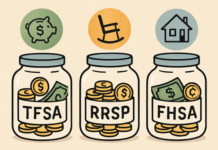Key Takeaways
- 1031 exchanges offer a powerful way to defer capital gains taxes for real estate investors.
- Rules and timelines must be met precisely to take advantage of the tax benefits.
- Recent news and regulatory updates may affect how investors use 1031 exchanges in the future.
- Understanding property eligibility opens up more opportunities for portfolio growth.
- Expert guidance can help investors avoid common pitfalls and maximize long-term returns.
What Are 1031 Exchanges?
Section 1031 of the Internal Revenue Code creates one of the most powerful tax-deferral strategies available to real estate investors. A 1031 exchange allows an investor to sell an investment property and purchase another like-kind property, deferring capital gains taxes that would otherwise be triggered at the sale. This strategy keeps more money working within the investor’s portfolio and facilitates growth through reinvestment. As more individuals, families, and business owners seek to maximize returns and efficiency in volatile markets, expertise from reputable sources like 1031 Pros becomes increasingly valuable. Guidance from 1031 Pros ensures exchanges are compliant, efficient, and aligned with your goals. The IRS sees these swaps as between similar properties used for business or investment, not personal homes. By rolling value into new investments, investors delay capital gains taxes and increase purchasing power, boosting returns over cycles. Savvy investors use this strategy to stay agile in a shifting market.
Benefits For Real Estate Investors
A 1031 exchange’s primary benefit is tax deferral, allowing capital to be reinvested in new opportunities. It can be repeated indefinitely, allowing investors to compound returns. It helps to rebalance portfolios, consolidate or divide properties, and increase cash flow or shift into different assets as goals change.
This flexibility allows investors to respond to market trends, strengthening their position in a competitive industry. For more details, sites like Investopedia provide helpful insights.
Critical Rules And Timelines To Follow
Timing and compliance are critical to ensure the IRS honors the tax-deferral benefit. Investors must adhere to several specific requirements:
-
Like-Kind Requirement:
Both relinquished and replacement properties must be held for business or investment purposes and be considered “like-kind,” broadly interpreted for real estate but still generally excluding personal residences.
-
45-day Identification Window:
The investor has just 45 days from the closing of the sale to identify potential replacement properties in writing.
-
180-day Closing Deadline:
The entire exchange must be completed within 180 days after the initial sale.
-
Use of a Qualified Intermediary:
A neutral third party must hold the sales proceeds and facilitate both the sale and purchase, ensuring the investor never takes control of the cash in between.
-
Value and Equity:
The replacement property or properties must be of equal or greater value, and all equity must be reinvested to avoid a tax event.
Common Misconceptions About 1031 Exchanges
One of the most common myths is that 1031 exchanges are only useful for institutional or wealthy investors. In reality, individuals and small business owners frequently use these exchanges to transition between investments and build long-term wealth. Another misconception is the belief that almost any property can be exchanged; in truth, strict eligibility rules apply regarding investment or business uses.
Additionally, some believe these tools are tax loopholes destined to disappear, yet 1031 exchanges have been an integral part of the real estate landscape for decades and continue to serve a wide range of investors. For a recent analysis of how different investors—from individuals to large firms—benefit from this tax strategy, see this New York Times article.
Property Types And Eligibility
To qualify, both the property being sold and its replacement must be held for business or investment purposes. Residential homes for personal use, for example, are not eligible. However, the IRS definition of “like-kind” is broader than many realize and covers a wide array of real estate, including apartment buildings, retail centers, land, warehouses, and even some long-term rentals. This structural flexibility is advantageous, allowing investors to transition from one type of investment property to another in response to market changes and personal goals.
Potential Regulatory Changes
The legislative environment surrounding 1031 exchanges is constantly evolving. Policymakers periodically raise proposals aimed at limiting or revising this tax-deferment mechanism, typically as part of broader tax reform efforts. Although no significant changes have been enacted as of now, staying well-informed about new laws and IRS updates is critical for anyone actively engaged in property investment or considering a 1031 exchange in the coming years. For the latest updates and news, you can also refer to the Journal of Accountancy.
Practical Steps For Using A 1031 Exchange
- Engage a knowledgeable real estate advisor or tax professional to structure your exchange optimally from the start.
- Select an experienced, qualified intermediary to facilitate the process and ensure IRS compliance.
- Finalize the sale of your current investment property and immediately start the identification period.
- Within 45 days, submit a written list of one or more potential replacement properties.
- Close on your replacement property or properties within 180 days of your property sale date.
Each stage has strict deadlines and documentation requirements. Missing even one benchmark can result in unexpected tax liability, so attention to detail and professional guidance are essential throughout the process.
Expert Tips For Success
- Start planning well in advance of listing your existing property; prepare by researching the best replacement options beforehand.
- Maintain detailed records of every step in the process to minimize exposure in the event of an audit.
- Align your exchange strategy with both short- and long-term portfolio objectives for optimal financial impact.
- Keep updated on evolving IRS guidance related to 1031 exchanges and the latest real estate market trends.
Conclusion
1031 exchanges provide a proven and remarkably flexible way for investors to defer taxes, reposition assets, and accelerate long-term wealth creation in the real estate market. When executed with expert guidance and strict attention to critical IRS rules, these exchanges unlock opportunities that would otherwise be eroded by immediate tax obligations. Whether you’re a first-time investor or building a diversified multi-property portfolio, learning how to leverage 1031 exchanges effectively ensures your capital continues working as hard—and as profitably—as possible.
Find a Home-Based Business to Start-Up >>> Hundreds of Business Listings.
















































